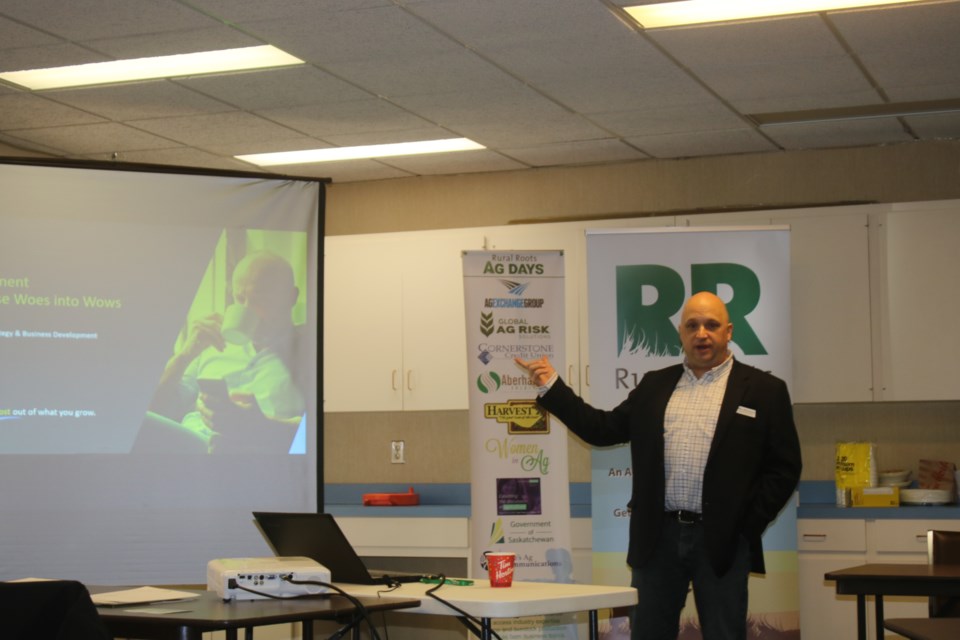There are a number of limiting factors when it comes to moving grain to market, so farmers have to look at multiple marketing options.
That was the core message for those attending a Rural Roots Ag Day held at the Yorkton branch of the Western Development Museum Friday from Mike Witkowicz.
“The funny thing about rail movement is two companies control rail movement and you have no input, and even less control,” said Witkowicz, vice-president of Strategy and Business Development with CXN360, an agriculture exchange group that looks to match up farmers with grain buyers.
In terms of moving product grain moves under a maximum revenue entitlement, added Witkowicz, but grains must compete with other commodities such as potash and oil which operate under an open market.
Competition is massive in terms of rail transportation as 50 per cent of goods exported move by rail and 70 per cent of product within the country moves by rail, he explained.
Witkowicz said while few things are guaranteed he said grain movement by rail “will always be a sore spot” for farmers.
The reasons for the issues are often out of the control of the rail companies which generally take the heat for delays.
Some though, a derailment, or a train delayed because of rail issues, can cost the system two, three, seven days, he said.
“You can’t get that week back,” said Witkowicz.
Ultimately the rail system is limited.
“It’s moving a soccer ball through a garden hose,” said Witkowicz, noting the choke point is the Rocky Mountains.” There are only three spots to cross the Rockies.”
With all products headed west having to move through three Rocky Mountain passes Witkowicz said farmers need to look at options.
One is to ship east through Thunder Bay but added from December through March, “there are no ships out of Thunder Bay.”
The currently moth-balled Port of Churchill is an option that is expected to reopen, but “at best” it handles only 500 to 700,000 tonnes, said Witkowicz.
Each option also needs to be measured against time.
The car cycle is the time to load a car, do to port, unload and return to where the grain started out. To the west coast that cycle is 15.7 days (to central Saskatchewan), said Witkowicz. East to Quebec City is 24.2 days, and
south through the United States in 27.9 days.
Some moves are being made to improve things, for example new hopper cars “make the pipe bigger,” said Witkowicz.
But there are other limitations on the system too.
“They don’t load boats in the rain in Vancouver,” said Witkowicz, adding they need covered vessel loading.
The situation potentially gets worse too.
“Production is increasing,” said Witkowicz, adding while capacity too is increasing it’s not keeping pace.
So producers need to be aware of limitations, and market to offset the potential worse congestion. Witkowicz said that can be accomplished by marketing at the right time. For example there is generally greater capacity in the
July to September quarter, and Oct to December is the quarter the system typically is geared up to move grain most efficiently.
Another option for producers is to seek out markets that do not rely on rail, marketing to local crushing plants, and grain processors being examples, said Witkowicz.




